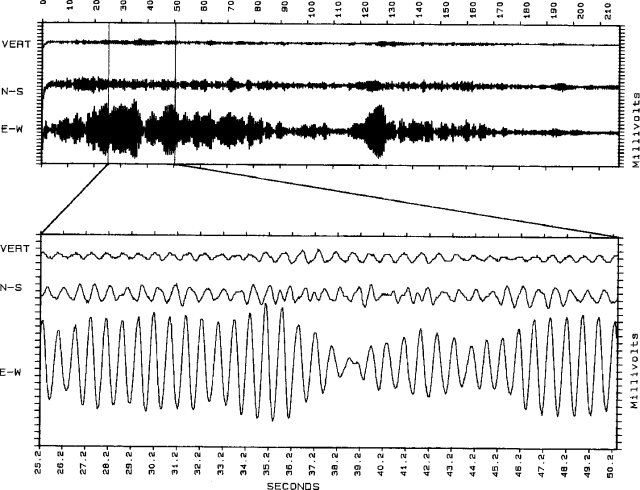Report on Arenal (Costa Rica) — November 1990
Bulletin of the Global Volcanism Network, vol. 15, no. 11 (November 1990)
Managing Editor: Lindsay McClelland.
Arenal (Costa Rica) Strombolian activity and lava production; seismicity dominated by E-W motion
Please cite this report as:
Global Volcanism Program, 1990. Report on Arenal (Costa Rica) (McClelland, L., ed.). Bulletin of the Global Volcanism Network, 15:11. Smithsonian Institution. https://doi.org/10.5479/si.GVP.BGVN199011-345033
Arenal
Costa Rica
10.463°N, 84.703°W; summit elev. 1670 m
All times are local (unless otherwise noted)
Strombolian activity, with small explosions, lava extrusion, and voluminous gas emission, continued during November. The following is a report by W. Melson.
"The volcano was continuously monitored, seismically and by direct observations from the Arenal Observatory 24-27 November. During this period, lava flow emission was continuous down the S and SW slopes, none reaching farther than 300 m below the summit (~1,300 m elevation). The volcano was usually obscured by clouds, but changing rates of flow advance were evidenced by the frequency of audible and sometimes visible avalanches that ranged from ~1-20/hour from the lava fronts on the oversteepened near-crater slopes. We did not determine whether flows were simultaneously active on the N and NW slopes. No significant pyroclastic events, such as explosions, occurred during this interval.
"Seismicity was marked by frequent intervals of intense harmonic tremor. Digital seismic recordings (figure 34) using a 3-component Mark L-4 3D geophone revealed the dominance of E-W horizontal motions, typically at 1-2 Hz, accompanied by very little vertical motion, and sometimes completely without vertical motion. The motion may reflect sub-horizontal flow of the viscous andesitic magma in an E-W subvolcanic conduit."
 |
Figure 34. Three-component seismogram of harmonic tremor at Arenal, November 1990. Courtesy of W. Melson. |
Geological Summary. Conical Volcán Arenal is the youngest stratovolcano in Costa Rica and one of its most active. The 1670-m-high andesitic volcano towers above the eastern shores of Lake Arenal, which has been enlarged by a hydroelectric project. Arenal lies along a volcanic chain that has migrated to the NW from the late-Pleistocene Los Perdidos lava domes through the Pleistocene-to-Holocene Chato volcano, which contains a 500-m-wide, lake-filled summit crater. The earliest known eruptions of Arenal took place about 7000 years ago, and it was active concurrently with Cerro Chato until the activity of Chato ended about 3500 years ago. Growth of Arenal has been characterized by periodic major explosive eruptions at several-hundred-year intervals and periods of lava effusion that armor the cone. An eruptive period that began with a major explosive eruption in 1968 ended in December 2010; continuous explosive activity accompanied by slow lava effusion and the occasional emission of pyroclastic flows characterized the eruption from vents at the summit and on the upper western flank.
Information Contacts: W. Melson, SI:G. Soto and R. Barquero, ICE.

